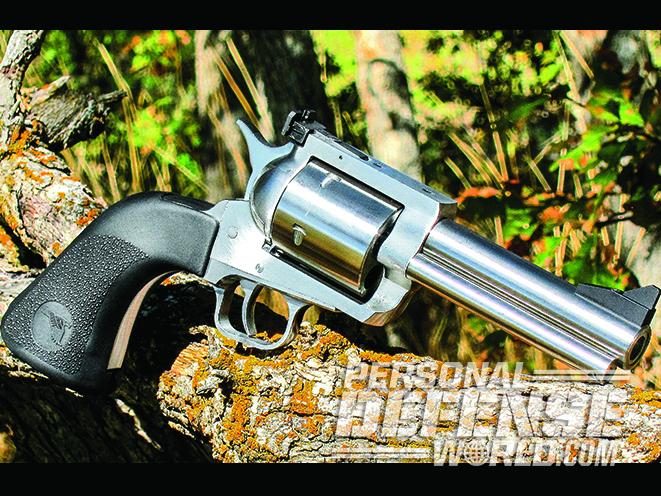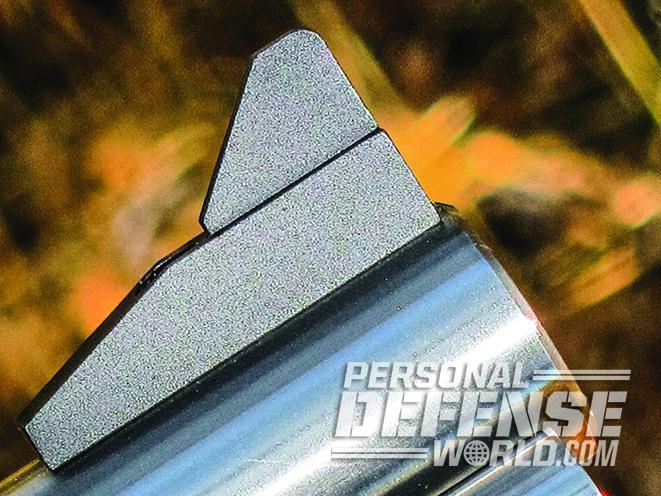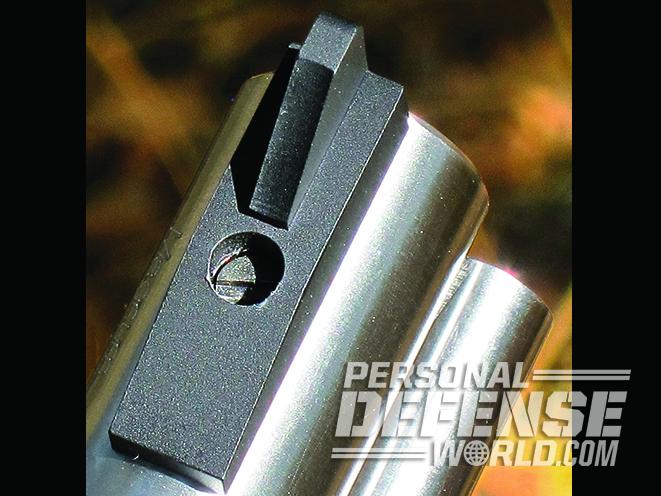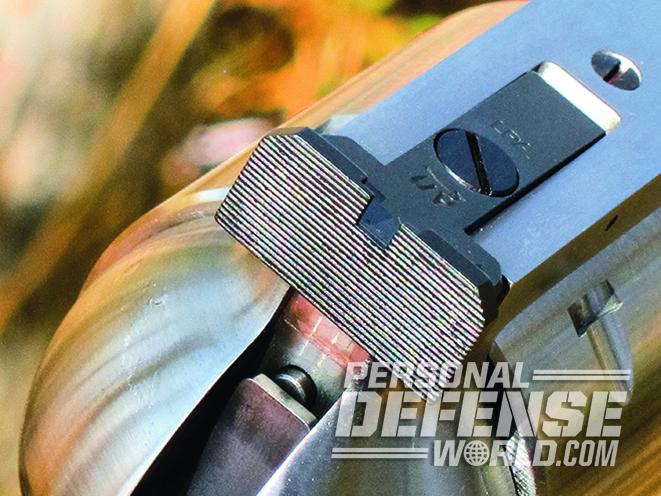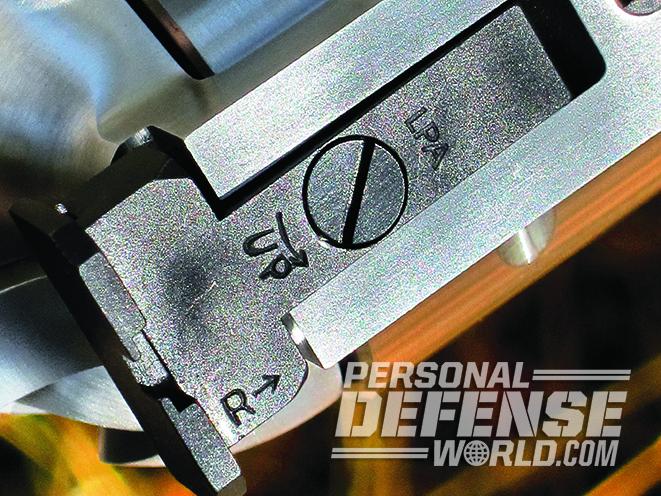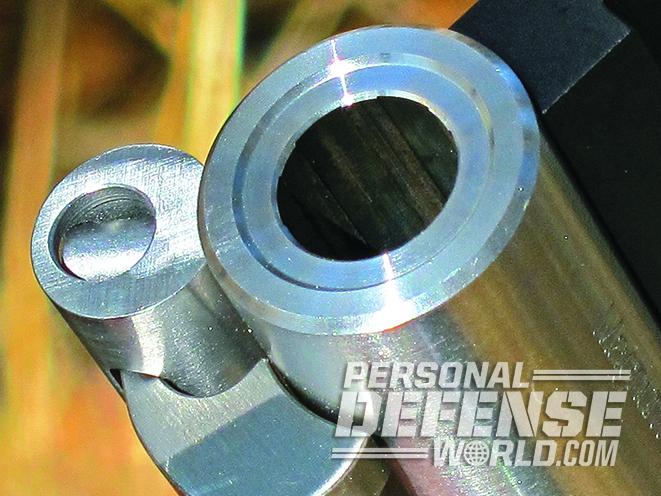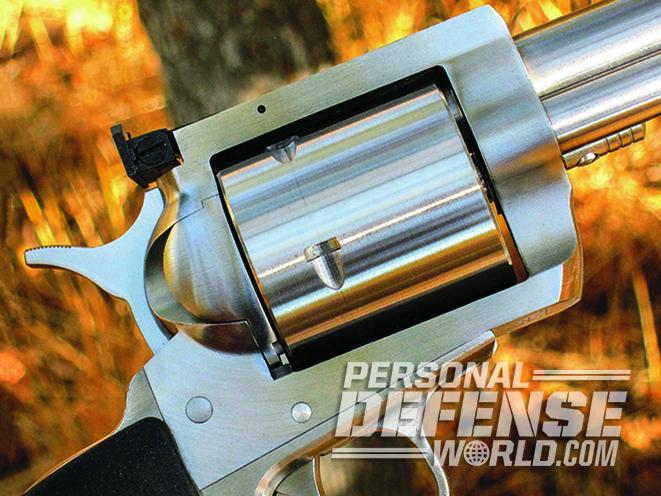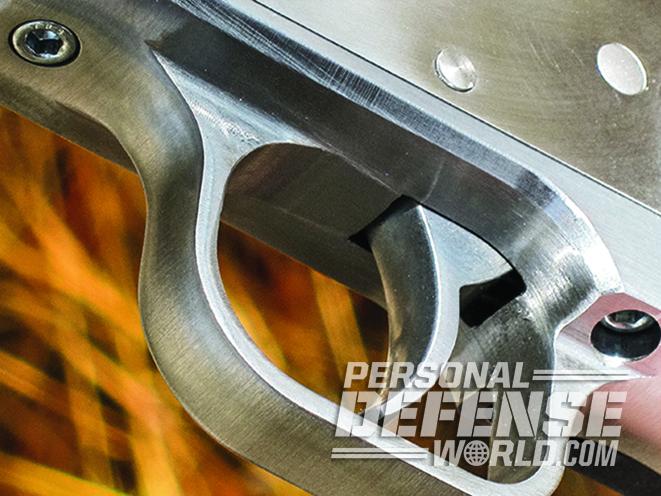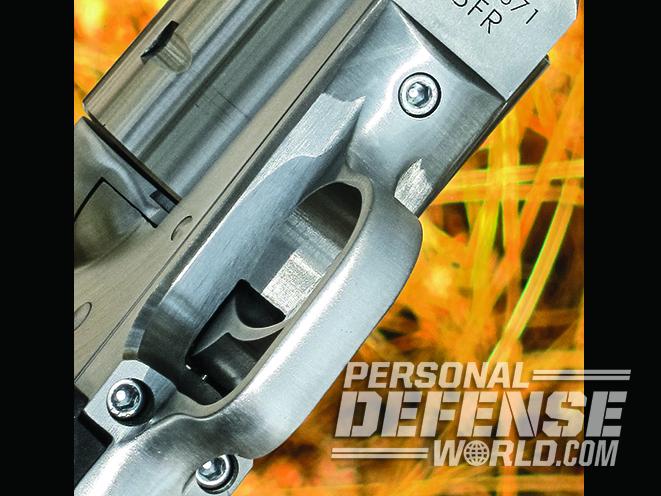Let’s face it, much like the world of high-performance gas buggies, there are times and places where a high-octane hand-blaster isn’t merely a matter of “Hey, wanna see something cool?” Instead, it’s a matter of getting the most out of a purpose-built machine in a high-pressure environment where the soccer mom’s minivan and the latest plastic pocket pistol simply can’t compete. While such levels of sheer “blow ’em outta the water” power are far beyond the mainstream market, that doesn’t mean there isn’t a market—it’s just a specialized market.
In 2000, that market segment made itself sufficiently noticeable to generate the introduction of the first practical production .45-70 single-action revolver, the mighty Magnum Research BFR. Whether you prefer to use those initials as “Big Frame Revolver” or “Biggest Finest Revolver,” as Magnum Research does on its website, or go with the more colloquial “Big Frickin’ Gun,” there’s no denying that the new hand cannon put major big-bore power into the hands of those who needed it, even with the velocity losses that come with using a barrel shorter than those on the rifles that traditionally used this caliber.
Awesome Power
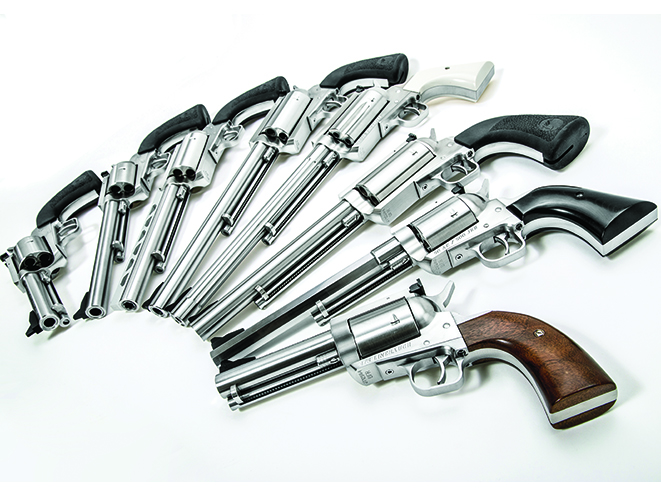
The Raja of the 1800s, chasing tigers in India from a lofty perch high atop his elephant with a trusty backup “howdah” pistol as a hedge against the thoroughly un-sporting actions of large and angry cats, had nothing over what the new BFR offered in a military caliber dating back to 1873. The .45-70 BFR was never a mass-produced model, but it did sell to the discerning adventurer who appreciated what it offered, and still does.
Advertisement — Continue Reading Below
The original long-framed Magnum Research BFR was not an adaptation of anything currently under dealer glass at the time. It wasn’t a rebuild of an existing model—it was designed and built from the ground up to take advantage of premium materials and out-sized dimensions to safely handle a good range of .45-70 loads, and not just mild Trapdoor Springfield-level lead.
- RELATED STORY: Hand Cannons – 9 High-Powered Magnum Handguns
Strongly designed and finely crafted in stainless steel, the BFR later spawned additional rifle calibers, like the .30-30 and .444 Marlin. The “Big Fricker,” as it occasionally is referred to, inserted a heavy-duty, highly portable, all-weather defensive shield into any equation involving furred hostility in the wilds, and it has been used over the years by intrepid hunters who preferred the challenge of handgunning big game.
Within its appropriate circle of influence, there’s no denying the BFR is a true success story, but there’s also no denying it (in long-frame size) is a heavy success story. As the original model established itself, people began to notice a secondary aspect of the gun beyond its sheer size and power—it was extremely well made. A top-tier gun, the company didn’t take shortcuts and built it for the long run. Handgunners who had no interest in rifle calibers still found the gun itself intriguing, and the result was a new short-framed model created to meet that interest, but in more conventional revolver calibers. Today, Magnum Research offers that short-framed BFR in .44 Magnum, .45 Colt, .454 Casull, .460 S&W, .480 Ruger and .500 S&W, among others, as standard-order calibers, and the company will take special requests in building one to your own caliber choice if it’s not a regular production chambering.
Advertisement — Continue Reading Below
When an editorial assignment on the BFR was dangled in front of me, I immediately jumped at the opportunity—with the condition being that it could be a .44 Magnum because I had a good stock of factory loads on hand, all ready to go. Heavier calibers can be harder to round up, but it’s certainly worth the effort if you need a higher horsepower ceiling than the .44 Magnum can achieve, and the same BFR features are common to all.
.44 Magnum BFR
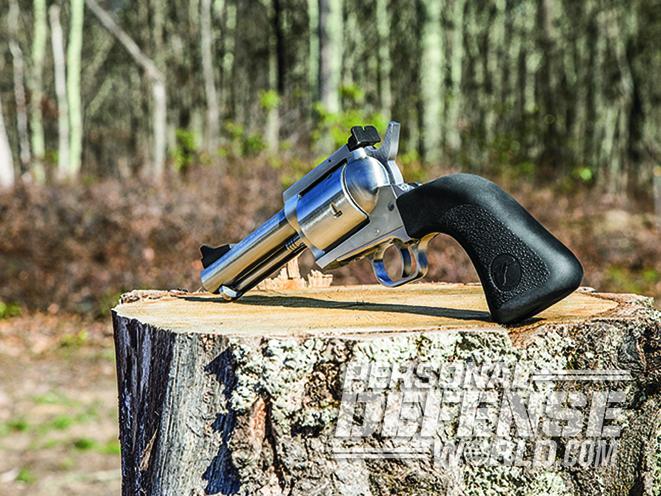
The stainless test sample I received came with a massive brush-satin-finished frame, a five-shot, non-fluted cylinder and a special-order 4.63-inch barrel. The standard .44 Magnum BFR sports a 5.5-inch barrel, but the company will accommodate requests to go shorter or longer up to 10 inches. The heavy, non-tapered barrel features a recessed target-style crown, and the Magnum Research name, Minnesota location and caliber designation are engraved on the left side with no fashionable warnings about reading the manual before loading.
The front and rear sights are fully adjustable. The tall front sight blade is made of blackened aluminum to stay put under heavy recoil better than a comparable steel version, and it’s attached to the barrel by a single carbon-steel screw. The blackened steel LPA rear sight is easily adjusted up, down and sideways by two large screws that don’t need tiny screwdrivers to turn, and the back of the rear sight sports horizontal serrations to reduce glare.
Advertisement — Continue Reading Below
Modified in 2016, the serrated hammer spur has been positioned higher to avoid digging into the web of the hand at full-cock, and the trigger is smooth, nicely rounded and entirely missing any sharp rear edges that can cut or scrape a trigger finger. The under-barrel ejector rod’s head is a large crescent-style unit—bigger than the button-type on other guns—and it’s easy to run with gloves from Alaska to either polar extreme. Although it may look like a Belt Mountain cylinder basepin with a large three-ringed head and locking setscrew to eliminate pin jumping, this one’s built in-house at the Magnum Research plant, like just about everything else on the gun aside from rear sight, springs and grip.
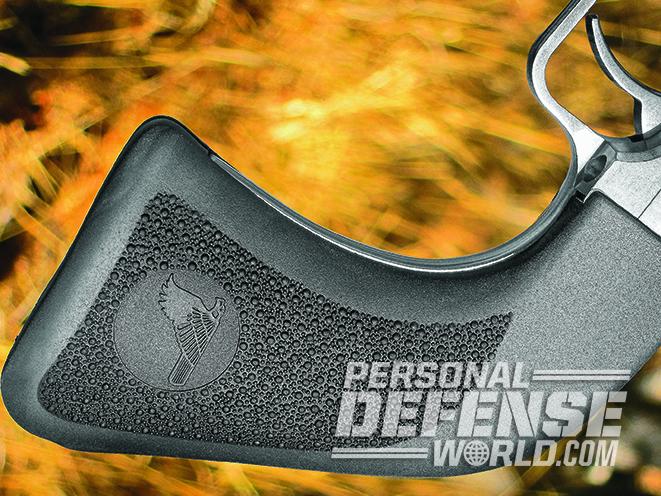
Speaking of the grip, this one is a collaboration between Magnum Research and Hogue. It’s a one-piece, oversized, black rubber grip with pebble-grain texturing and the Magnum Research logo on both sides. It’s also a no-screw grip—once it’s on, it stays on, and according to the company, it’s removable only with a special spreader tool that comes in the box with a manual, a cable lock and an aluminum alloy scope rail. This grip will not shoot loose, and no, I didn’t attach glass to this short-barreled five-shot gun for range testing.
Back to screws: Magnum Research uses a mix on this bear-buster. The sights use black slotted screws, the ejector housing and basepin use stainless slotted screws, and the five screws that attach the well-mated main and grip frames are stainless hex-heads. Like any single action, you can still expect screws to loosen with extended firing, so keep an eye on most of them. The exception is the ejector housing—that screw won’t be going anywhere.
Advertisement — Continue Reading Below
- RELATED STORY: A Look at the Magnum Research Desert Eagle 1911 GSS
Did I mention the BFR is a well-thought-out product? If I didn’t, I am now. These guns are built to handle a lifetime of hot loads and heavy recoil. Magnum Research actually uses a two-step epoxy to nail that housing screw down and keep it in place. Not happy with just securing the screw, Magnum Research also uses the same epoxy between the housing itself and the barrel to make damn sure the housing and ejector will never launch themselves into the brush at a very inopportune moment. Trust me, that happens, and at the very least it puts a minor damper on any excursion while you search the weeds, rocks and bushes to find the parts. Or not find the parts. But don’t panic: The screw and housing can still be removed if necessary with the careful application of heat from an appropriate torch source.
Inside, the BFR obviously borrows heavily from the Ruger Blackhawk’s action, and it’s not a bad thing to draw on a well-proven concept. There’s a familiar loading gate interlock that blocks the hammer from cocking when it’s open for loading; the same interlock also blocks the gate from opening when the hammer’s back, and the design uses a transfer bar safety for fully loaded carry without the hammer resting against the firing pin. The primary large parts in the frame and cylinder are made of high-quality 17-4 PH stainless steel while the barrel, hammer and trigger are made from 410 stainless. The bore is button-rifled with a 1-in-16-inch twist rate, and the action is smooth, with a very clean and consistent 3-pound trigger pull. Magnum Research has set this BFR up with a free-spinning cylinder, a very useful touch in aligning chambers with the loading gate cutout in the frame.
Making Thunder
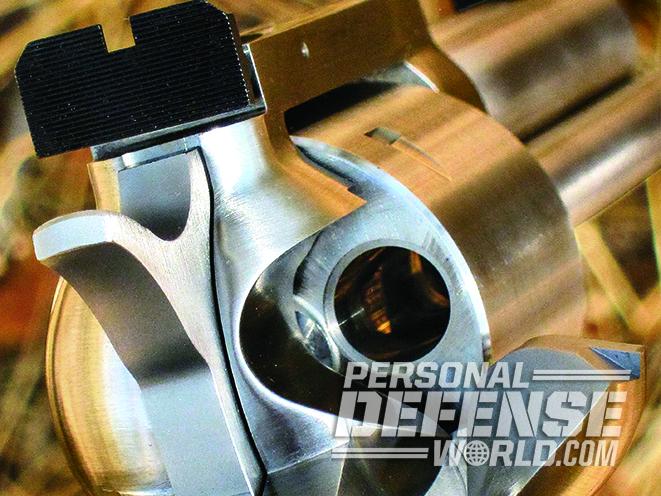
At the range, shooting off a rest, the Magnum Research BFR took on black bullseyes at 25 yards in bright sunshine with four different factory loads with JHPs weighing 240, 250, 275 and 300 grains. I’d expect the accuracy to improve once the bore is seasoned, and mounting an optic usually increases accuracy, but using just iron sights, three of the loads created groups measuring 2 inches or less, and the fourth wasn’t far behind. The results were close enough to indicate that bullet weight wasn’t much of a factor; the gun did its best with the heaviest and lightest. It’d be interesting to see what it does with hard-cast lead, but time didn’t allow for trying that.
Advertisement — Continue Reading Below
The oversized Hogue rubber grip kept the gun very firmly planted in my hand—no nonsense about the single-action plow handle slipping down under full-bore .44 Magnum recoil—and it also cushioned my palm very effectively. The only downside I found to the grip was that when I held it as high in the hand as possible while still getting a full three-fingered hold for maximum control, the half-inch “dismount” slot, just below the spot where the frontstrap ended, gouged my pinky finger each time I touched off thunder and brimstone. That’s not a major complaint (and no comments about delicate pinkies, please)—just a “Hmm, that could add up over a long session.” But most of us are unlikely to spend long hours shooting .44 Magnums and heavier calibers, and the slot’s needed to insert the aforementioned grip-removal tool, so we’ll just soldier on with it. Hand size may eliminate the minor issue completely for many, anyway.
The BFR’s solid heft goes a long way toward mitigating recoil over lighter magnum single actions. And while something like a 10-inch barrel would add some serious weight, the 4.63-inch-barreled test sample makes a more-than-fair tradeoff in tote-ability versus shootability in big-bore calibers. No, it’s not a lightweight trail gun, but carried in good leather on a sturdy belt, you won’t mind how 53.5 ounces (unloaded) adds up when it comes time to shoot.
Magnum Research BFR Field Fixes
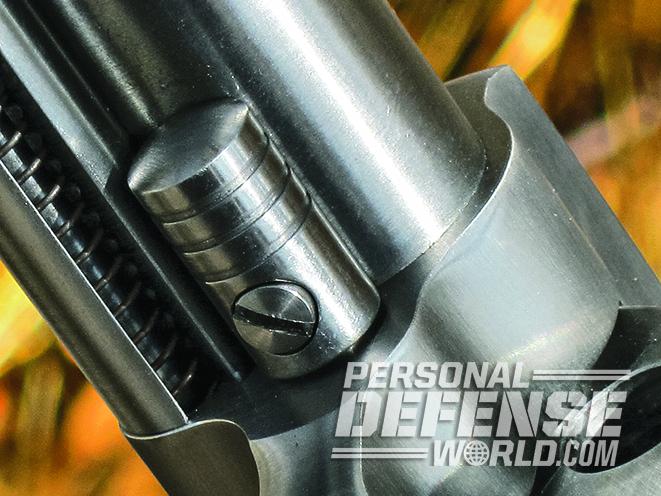
Nowadays, I tend to find contrasting sights easier to work with, but the black-on-black sight picture was large, square, glare-free and basically target-grade on a big-critter revolver. There were two glitches that turned up during the range session, one a factory “oops” and the other quite probably just a case of the Basepin Gremlin tossing a monkey wrench into the machinery at the end. The front sight was wobbly out of the box, and assuming it was just the screw not being firmly tightened, I took a screwdriver to it. It turns out the screw was apparently slightly too long and already bottomed out, and in trying to back it out to do some quick kitchen table shortening with an appropriate gunsmith screwdriver and stone, I managed to break off one side of the slotted screw head. It was in with a capital “T” for tight. With a short deadline and no time for a return to the factory or a local gunsmith, and too much wobble in the blade for any consistency in the accuracy testing, I had to do an entire shoot with the front sight duct-taped in place to hold it still. But don’t let that be your only takeaway from this review—just keep it as an amusing side note.
Advertisement — Continue Reading Below
- RELATED STORY: Four .44 Magnum Revolvers To Shoot Or Own Before You Die
The other glitch didn’t occur during shooting, but, while making some quick end-of-shoot notes, I found the spring-loaded basepin plunger had frozen in a retracted position. The sole purpose of and for that plunger is to push back against the transfer bar to keep it from jamming against the bottom of the frame-mounted firing pin as the bar rises when the hammer’s cocked. With no plunger pressure against the bar, it flops around freely; when the muzzle was pointed down and the hammer thumbed, the bar jammed. Muzzle up, the bar fell back away from the firing pin under its own weight. I mention this not to dwell on it but to point out that the plunger in a transfer bar ignition system needs lube occasionally, and indications are the BFR was dry enough to build up burnt powder residue during the shoot and freeze.
I ran into this same exact problem on a Ruger more than 40 years ago and cured it the same way then as here—by letting a couple drops of a cleaner/lube soak on the plunger. After about 30 minutes, the plunger de-jammed and functioned perfectly. Just be aware of this tiny critical component of the design and lube it now and then. On a related “pay attention” note, make sure when you remove the cylinder for cleaning and replacing, that you position the basepin correctly and fully to the rear, and dog that basepin screw down tight into its recess milled into the bottom of the barrel.
Heavy Artillery
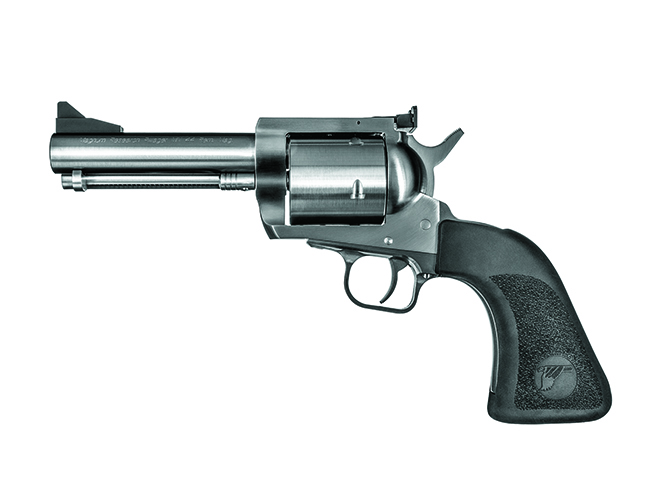
Advertisement — Continue Reading Below
All in all, the Magnum Research BFR is a rock-solid artillery piece in any caliber, with options in calibers and barrels to adapt the basic idea from a truck-friendly short-barreled belt gun to a high-mountain long-barreled gun for chest carry. It can take on conditions and critters with confidence that you’d have to look hard to find elsewhere. Don’t expect to find this gun at Wal-Mart; it’s top quality and you’ll pay accordingly. But you’ll also get what you pay for.
Caliber: .44 Magnum
Barrel: 4.63 inches
Advertisement — Continue Reading Below
OA Length: 11 inches
Weight: 53.5 ounces (empty)
Grip: Hogue rubber
Sights: Adjustable
Action: SA
Finish: Brushed stainless
Capacity: 5
MSRP: $1,184
For more information, visit magnumresearch.com or call 508-635-4273.
This article was originally published in ‘The Complete Book of Revolvers’ 2017. To subscribe, visit http://outdoorgroupstore.com
